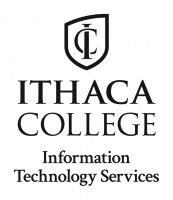 Several members of the campus community have asked why there seem to be issues with the Wi-Fi network. Wi-Fi clients, including laptops, tablets, and smartphones rely on wireless access points (APs) to send and receive data.
Several members of the campus community have asked why there seem to be issues with the Wi-Fi network. Wi-Fi clients, including laptops, tablets, and smartphones rely on wireless access points (APs) to send and receive data.  Several members of the campus community have asked why there seem to be issues with the Wi-Fi network. Wi-Fi clients, including laptops, tablets, and smartphones rely on wireless access points (APs) to send and receive data.
Several members of the campus community have asked why there seem to be issues with the Wi-Fi network. Wi-Fi clients, including laptops, tablets, and smartphones rely on wireless access points (APs) to send and receive data.
The AP is typically connected to a wired network from which resources including file services, email, and internet based sites can be reached. APs use radio waves (RF) just like cell phones and radios. The AP is shared among all clients communicating with it. Wi-Fi APs and clients are capable of only either sending or receiving information at a time, e.g. I talk, you talk, I talk, etc. APs can't send and receive data at the same time like a wired connection. RF signals are also subject to distance limitations and interference introduced by things such as building composition, microwaves, cordless phones, and even people.
How this affects you:
You probably don't have these problems at home because we have hundreds of APs and many more clients trying to connect to an AP at the same time. And homes typically don’t have the types of walls, concrete, steel and re-bar found in campus buildings that affect the RF signals.
What is ITS doing about the wireless? ITS is working to address problems as they are reported and on a site survey to help us plan for the future. If you experience problems, contact the Helpdesk or complete the wireless problem form.
ITS Helpdesk
helpdesk@ithaca.edu
607-274-1000
104 Job Hall
https://www.ithaca.edu/intercom/article.php/20130924104217432